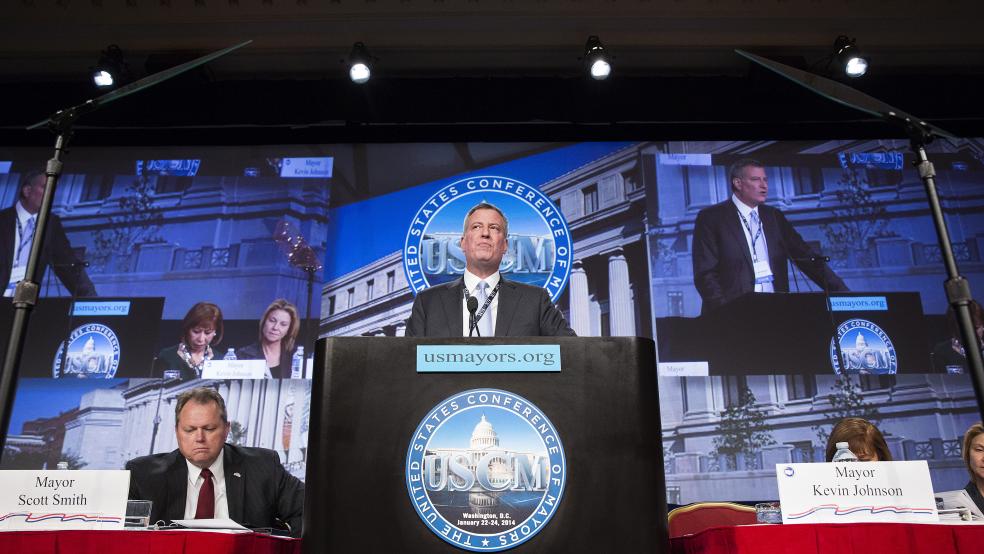U.S. mayors set to meet Thursday evening with President Obama will be the bearers of encouraging economic news. Nearly all of the 363 metropolitan areas of the country are expected to see real economic growth in 2014, according to a report released today.
After months of dreary news about Detroit’s bankruptcy, lingering economic drag from the Great Recession and unfunded municipal pension programs, the new study by the U.S. Conference of Mayors offers welcome news for federal, state and local officials.
Related: After Detroit, Who Will Cut City Pensions Next?
The study, produced with IHS Global Insight, shows that 340 of the nation’s metropolitan areas – or 93 percent –are likely to experience growth of one percent or higher. By comparison, only 183 metro areas experienced that growth in 2013.
About 19 percent of metro areas are projected to see real Gross Metro Product (GMP) growth of 3 percent or higher in 2014, while 62 percent are projected to have growth of 2 percent or higher. Nearly all metro areas are projected to return to job growth this year.
Metro areas such as Midland and Odessa, Texas; Sebastian-Vero Beach, Naples and Orlando, Fla., Columbus, Ind.; Port St. Lucie, Fla.; Raleigh-Cary, N.C.; Denver-Aurora and Greeley, Colo; Salt Lake City, Utah; and even tiny Ames, Iowa, are expected to experience the greatest growth in the mid 3 percent to 4 percent range.
Real economic growth in the New York-Northern Jersey region is slated for 2 percent this year. The St. Louis area is projected to grow by 1.7 percent, while Philadephia-Camden will grow 1.9 percent, Los Angeles-Long Beach 2.2 percent and the Detroit-Warren-Livonia area of Michigan just 1.8 percent, according to the study.
“These numbers prove that our cities and metro areas are finally turning the corner and moving toward steady economic recovery,” said Scott Smith, the mayor of Mesa, Arizona, and president of the conference of mayors. “Mayors have always known that as cities and their metro areas go, so goes the nation.”
Nationwide, real GDP growth is forecast to be 2.7 percent in 2014 and 3.2 percent in 2015, up from 1.9 percent in 2013.
Related: U.S. Cities: The Secret Engine of the Global Economy
Growth in consumption will jump nationally to 2.8 percent compared to only 2.0 percent in 2013. According to the new report, the state and local government sector will finally stop its drag on GDP growth, inching into positive territory with a 0.4 percent growth in 2014, after a -0.2 percent contraction in 2013 and -.07 percent in 2012.
The conference of mayors’ report is the latest in a series of encouraging forecasts of the economic comeback of U.S. urban centers and metropolitan areas. A report in April 2012 by the McKinsey Global Institute demonstrated just how vital a role U.S. cities will play in driving the global economy over the years and decades ahead.
“Large U.S. cities are expected to generate more than 10 percent of global GDP growth in the next 15 years, a larger contribution than all of the large cities of other developed countries combined,” wrote the authors of that report.
Obama is hosting a reception for nearly 300 mayors at the White House this evening. The agenda will include policy discussions on topics including education, workforce development, health care and boosting trade.
Top Reads from The Fiscal Times:


